When the cold hits, you probably throw on a heavy coat, wrap yourself in a scarf, and maybe even hide under a blanket. But some creatures are built to shrug off the cold in ways that humans can only dream of. From the tiny to the massive, these animals have evolved incredible adaptations that make them masters of surviving in extreme cold. Let’s dive into the world of these frosty survivors and see what makes them so special.
1. Arctic Fox

The Arctic Fox is a master of survival in one of the coldest environments on Earth. With temperatures dropping as low as -58°F, these foxes have developed a thick, multi-layered coat that serves as insulation. Their paws are covered in fur, which acts like built-in snowshoes, allowing them to tread on snow without getting frostbite. According to a study by the Norwegian Polar Institute, their metabolic rate increases in response to colder temperatures, which helps them maintain body heat. Their keen sense of hearing also allows them to detect and hunt prey beneath the snow.
In addition to their physical adaptations, Arctic Foxes have unique behavioral traits that help them survive the cold. They have a flexible diet, feeding on anything from lemmings to seaweed, which ensures they can find food all year round. During the harsh winter months, they utilize their excellent memory to cache food supplies, which they can return to when resources are scarce. These foxes are also known for their social behavior, often forming monogamous pairs that raise offspring together. This cooperation helps increase their chances of survival in such an unforgiving climate.
2. Emperor Penguin
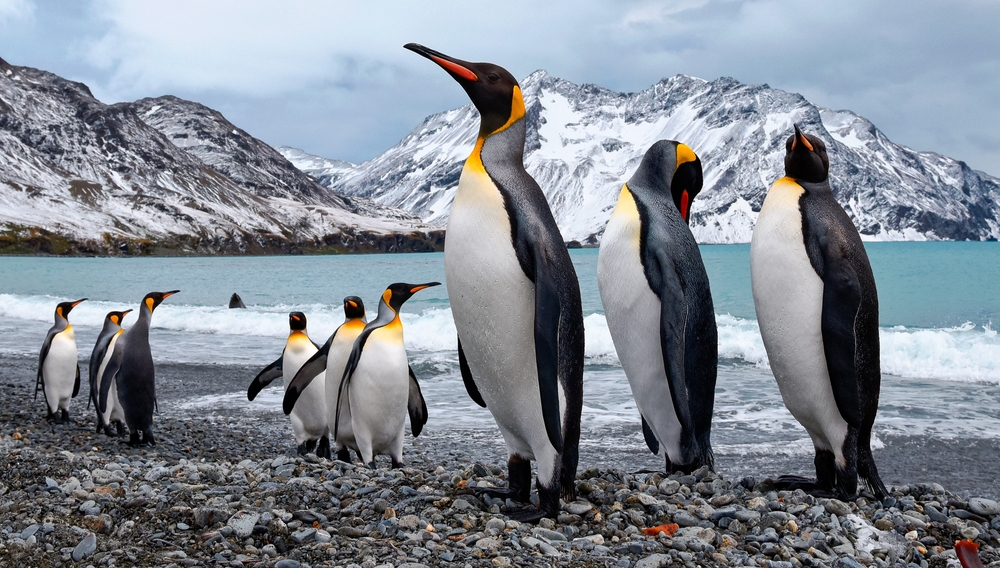
Emperor Penguins are the largest of all penguin species and are true icons of Antarctic life. They’ve mastered the art of staying warm amidst icy winds and freezing temperatures. Their feathers are densely packed and waterproof, providing a first line of defense against the cold. Beneath their feathers, they have a thick layer of fat, which serves as insulation. During the brutal Antarctic winter, they huddle together in large groups, taking turns being on the outer edges to minimize heat loss.
The life cycle of an Emperor Penguin is closely tied to the harsh winters. Males endure months of fasting while incubating eggs on their feet, covered with a warm brood pouch. They rely on their fat reserves to survive the winter without food. Meanwhile, females travel great distances to the ocean to hunt, returning just in time to feed their newly hatched chicks. This remarkable cooperation ensures the continuity of their species despite the challenging environment.
3. Wood Frog
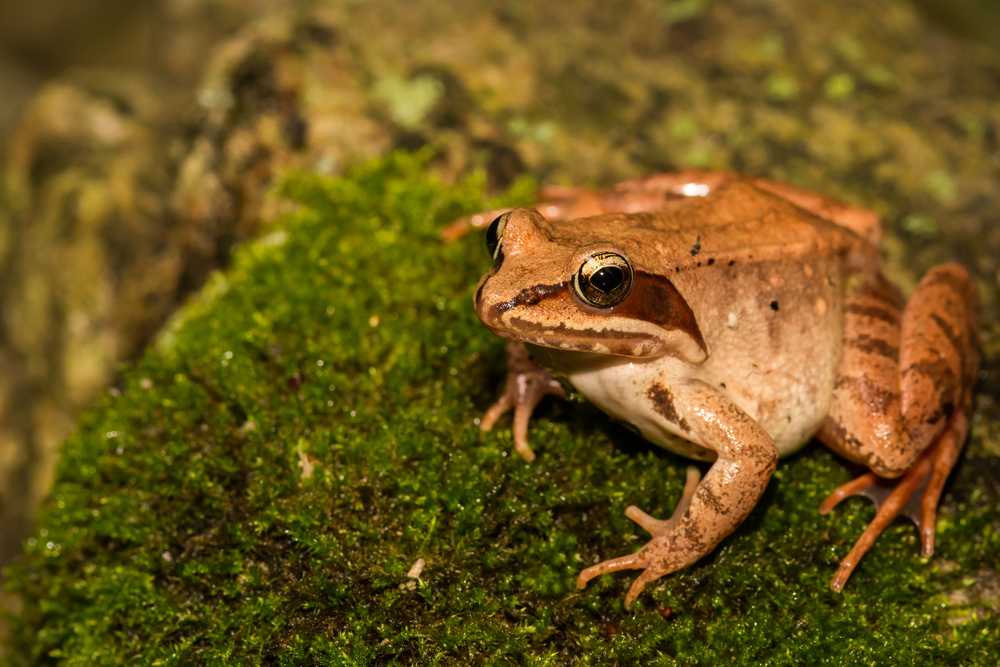
Wood Frogs have a unique and fascinating way to survive the cold that might surprise you. These frogs can tolerate being frozen solid during winter, essentially pausing their bodily functions until they thaw out in spring. According to Dr. Kenneth Storey, a biochemist at Carleton University, Wood Frogs produce a type of antifreeze chemical in their bodies that prevents ice from forming inside their cells. This remarkable adaptation allows them to endure temperatures that would be fatal to most other animals. Once the ice melts, they resume their normal activities as if nothing happened.
Their ability to freeze and thaw is not just about survival; it also plays a crucial role in their lifecycle. By emerging early from hibernation, Wood Frogs have a head start on breeding in the short window of spring. This ensures that their tadpoles have enough time to develop before the next winter arrives. Their unique adaptation to cold has fascinated scientists and inspired studies into cryopreservation—how living tissues might be frozen and thawed without damage. This little frog is not just a survivor; it’s a pioneer in the study of life in extreme conditions.
4. Polar Bear
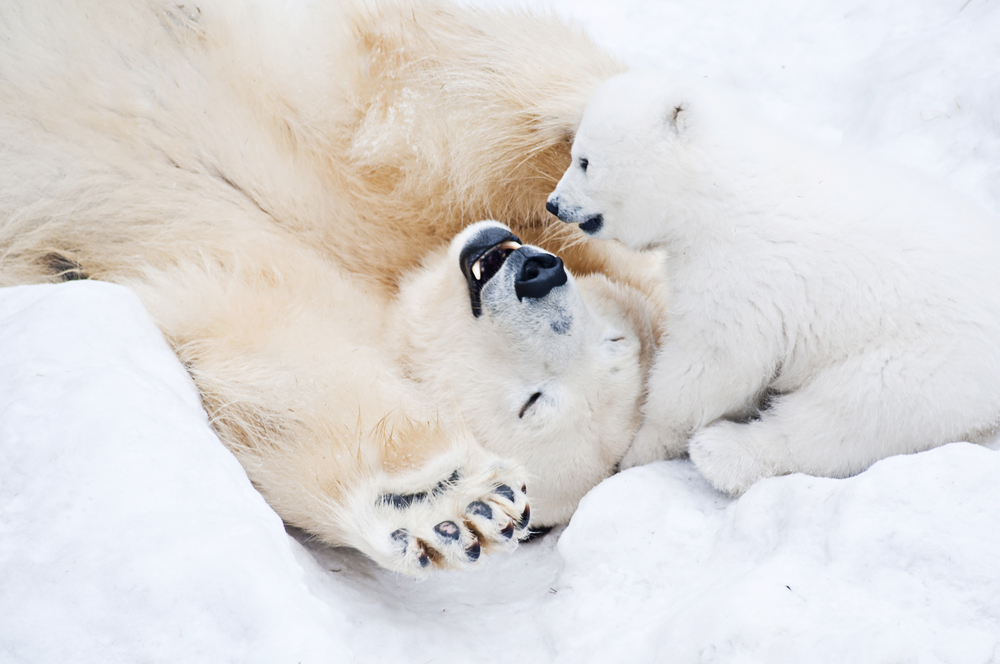
Polar Bears are the ultimate cold-weather predators, perfectly adapted to the Arctic environment. Their thick fur and a substantial layer of fat beneath their skin help them stay warm in freezing temperatures. Unlike other bears, their fur is not entirely white; it’s actually translucent and reflects visible light, providing excellent camouflage against the snow and ice. This camouflage aids in hunting seals, their primary food source, which they catch by waiting patiently at breathing holes in the ice. Their large paws distribute their weight effectively, allowing them to walk on thin ice without breaking through.
Beyond their physical traits, Polar Bears are highly adapted to their cold environment in terms of behavior. They are solitary creatures, roaming vast areas to find food, which is crucial as their prey can be scarce. During fasting periods, they rely on their fat reserves, which can sustain them for months. Despite their solitary nature, mothers are highly protective of their cubs, teaching them survival skills for up to three years. This combination of physical and behavioral adaptations makes the Polar Bear a formidable survivor in the Arctic wilderness.
5. Tardigrade

Tardigrades, often called water bears, are microscopic creatures that have captured the attention of scientists worldwide. Known for their resilience, tardigrades can survive in environments that would kill most other forms of life. Dr. Thomas Boothby, a researcher at the University of Wyoming, explains that tardigrades can enter a cryptobiotic state, essentially drying out and suspending their metabolism. In this state, they are nearly invincible to extreme cold, heat, radiation, and even the vacuum of space. Once favorable conditions return, they rehydrate and resume their normal activities.
This ability to survive extreme conditions has made tardigrades a subject of interest in astrobiology and the study of life’s limits. Their uncanny resilience raises questions about the potential for life on other planets with harsh environments. Tardigrades have been sent to space to study how they cope with the extreme conditions there, providing insights into the possibilities of interstellar life. Despite their small size, tardigrades demonstrate that life can adapt to almost any condition. They are a reminder of the incredible diversity and resilience of life on Earth.
6. Reindeer
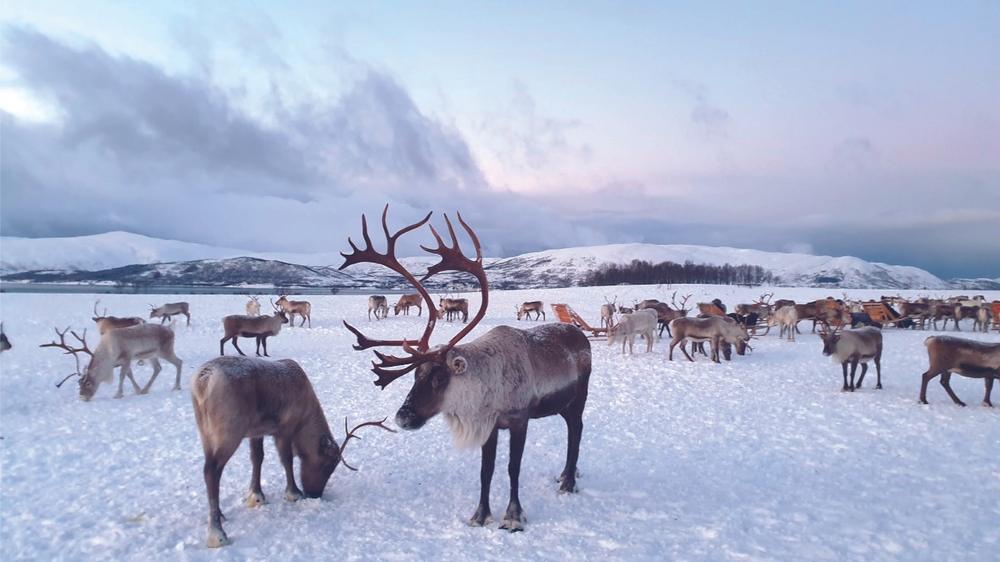
Reindeer, also known as caribou in North America, are well-suited for life in cold environments. Their thick, insulating fur traps in heat, and their compact bodies help reduce heat loss. Their specialized noses warm the cold air before it reaches their lungs, conserving body heat. Reindeer are also equipped with large, concave hooves, giving them stability on ice and snow. These adaptations make them well-suited for migrating across vast, frozen landscapes in search of food.
In addition to their physical adaptations, reindeer have fascinating behavior that aids in their survival. They are known for their long migrations, traveling thousands of miles each year in search of food and suitable breeding grounds. During the winter, they dig through the snow to find lichen, their primary food source, using their hooves as shovels. This lifestyle requires them to be highly social and cooperative, often forming large herds for protection and resource sharing. The reindeer’s ability to thrive in harsh climates has made them a symbol of endurance in the face of adversity.
7. Snow Leopard
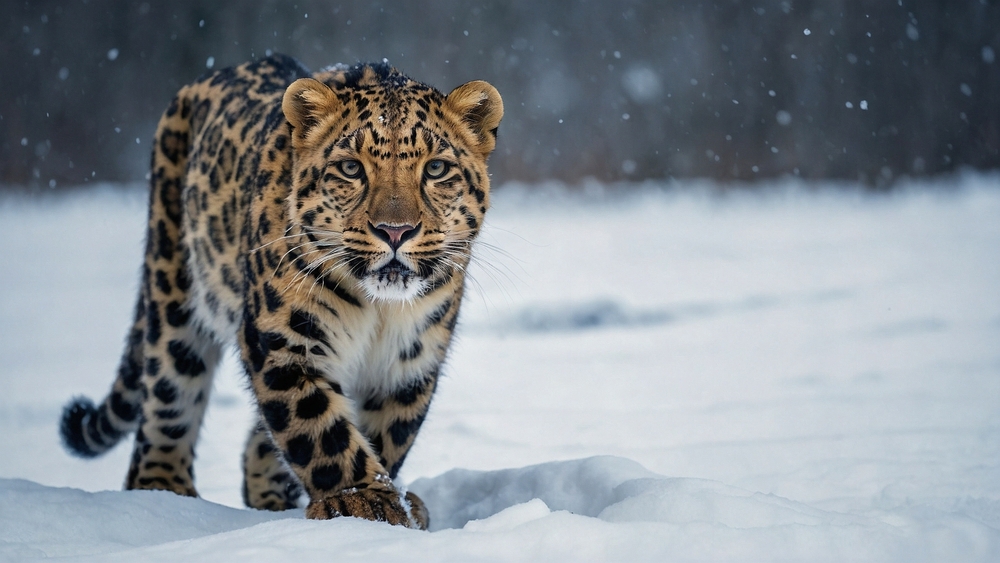
Snow Leopards are elusive big cats adapted to life in the cold mountainous regions of Central and South Asia. Their thick fur, which grows up to five inches long, provides excellent insulation against freezing temperatures. They have wide, fur-covered feet that act like natural snowshoes, allowing them to navigate snowy terrains with ease. A study led by Dr. Rodney Jackson, a noted snow leopard expert, found that these big cats have a long tail, which they can wrap around themselves like a scarf for added warmth. Their powerful build and exceptional balance help them traverse steep and rocky slopes.
These solitary predators have a keen sense of hearing and sight, which aids in hunting in difficult terrain. They primarily feed on blue sheep and ibex, using their stealth and strength to ambush prey. Snow Leopards are known for their incredible jumping ability, capable of leaping up to 50 feet in pursuit of their quarry. Despite their adaptability, Snow Leopards face threats from habitat loss and poaching. Conservation efforts are crucial to ensure these magnificent creatures continue to thrive in their rugged, mountainous homes.
8. Musk Ox
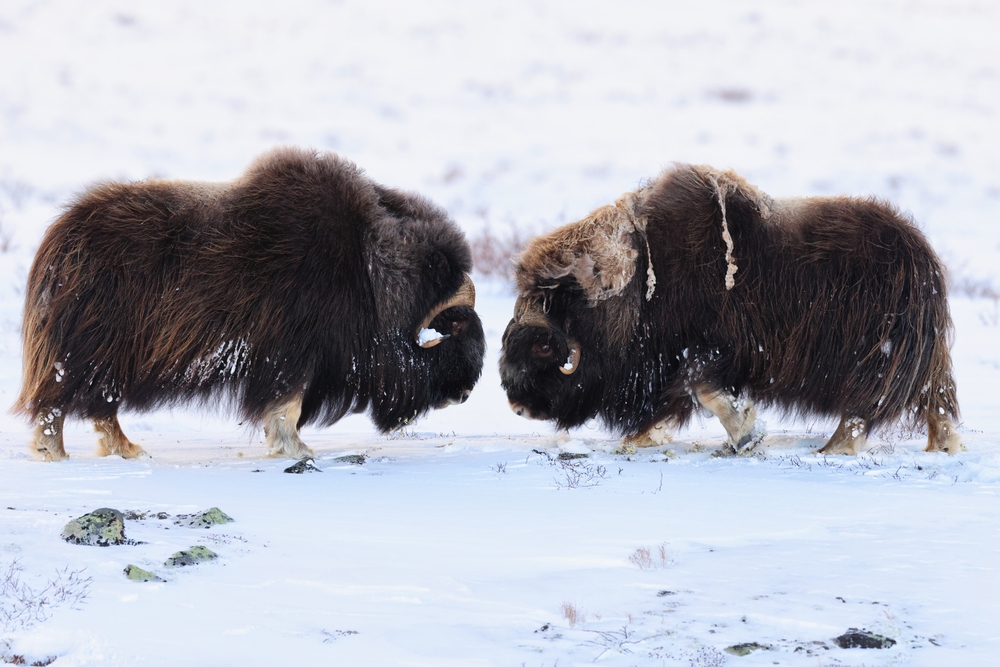
Musk Oxen are robust animals, perfectly adapted to the frigid Arctic tundra. Their long, shaggy coats consist of two layers, with a soft undercoat called qiviut providing superior insulation. This wool is highly prized for its softness and warmth, even considered warmer than sheep’s wool. Their short, stocky bodies minimize heat loss, while their sharp hooves and strong necks enable them to dig through snow for vegetation. Musk Oxen are social animals, often forming protective circles to shield against predators.
Their ability to adapt to harsh environments is also reflected in their social structure. During the breeding season, males compete for dominance, engaging in head-butting contests that demonstrate their strength and resilience. In winter, they rely on their cooperative behavior to find food and maintain warmth, often traveling in herds across the tundra. This social organization and physical adaptation ensure musk oxen can survive the most brutal winters. Their presence in the Arctic ecosystem highlights the delicate balance of life in extreme climates.
9. Beluga Whale
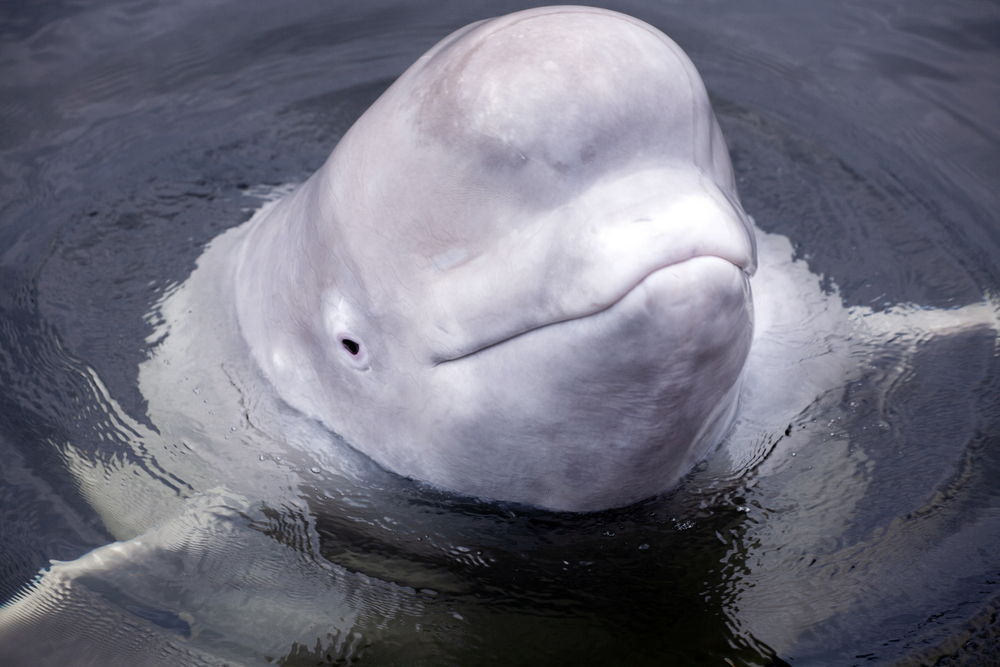
Beluga Whales are known for their distinctive white color and adaptability to cold Arctic waters. They have a thick layer of blubber, which insulates them against icy temperatures and aids in buoyancy. Unlike other whales, Belugas lack a dorsal fin, allowing them to navigate under ice with ease. Their flexible necks enable them to move their heads independently, aiding in communication and navigation. These social animals are often found in pods, cooperating to hunt and protect themselves from predators.
In addition to their physical characteristics, Belugas have unique vocal abilities that facilitate survival in their cold habitat. Known as “canaries of the sea,” they possess a vast repertoire of sounds used for communication and echolocation. This helps them find food and navigate the often murky and ice-covered Arctic waters. Their social nature extends to close-knit family groups, which foster cooperation and learning among members. Beluga Whales showcase the power of adaptation and communication in overcoming the challenges of a cold environment.
10. Antarctic Krill

Antarctic Krill are small, shrimp-like creatures that thrive in the icy waters surrounding Antarctica. Despite their size, they play a vital role in the marine food chain, serving as a primary food source for various animals, including whales and seals. Krill have the remarkable ability to survive in extremely cold water due to the presence of antifreeze proteins in their bodies. These proteins prevent ice crystals from forming, allowing them to maintain cellular function in sub-zero temperatures. Their swarming behavior is also a crucial adaptation, as it provides safety from predators and enhances feeding efficiency.
Krill’s life cycle and breeding habits are closely tied to the seasonal changes in the Antarctic ecosystem. They feed on phytoplankton, capitalizing on the summer algae blooms to build energy reserves. In winter, krill reduce their activity and rely on stored energy to survive the darkness and cold. Their adaptability to the extreme environment ensures they remain a cornerstone of the Antarctic food web. This resilience underscores the interconnectedness of life and the importance of each species in maintaining ecological balance.
11. Weddell Seal
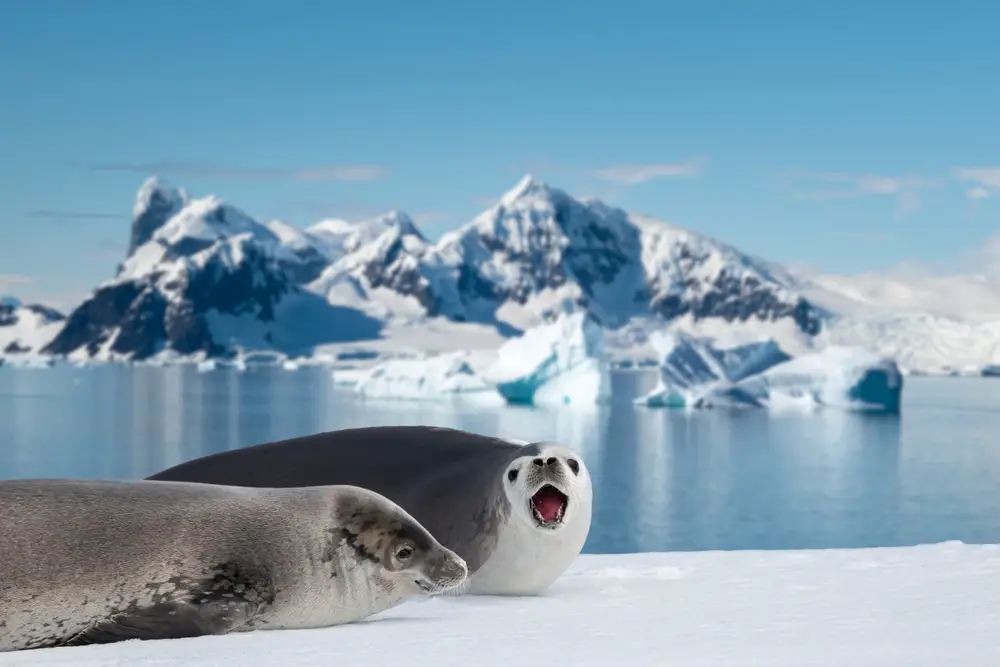
Weddell Seals are remarkable mammals that inhabit the frigid waters of Antarctica. Equipped with a thick layer of blubber and a dense fur coat, they are perfectly suited for life in freezing temperatures. These seals are known for their ability to dive deep and hold their breath for over an hour, enabling them to hunt beneath the ice. They maintain breathing holes in the ice by using their teeth to grind away at the edges, a critical adaptation for survival in such a harsh environment. Weddell Seals are also proficient at navigating the labyrinthine ice floes, often traveling long distances in search of food.
Their ability to survive extreme cold is further enhanced by their social structure and breeding behavior. Weddell Seals often form small groups, providing mutual protection against predators like orcas and leopard seals. During the breeding season, males establish territories and compete for females, ensuring genetic diversity. The pups are born on the ice and quickly learn to swim, adapting to their cold surroundings from a young age. This combination of physical adaptations and social behavior makes Weddell Seals formidable residents of the Antarctic.
12. Siberian Tiger
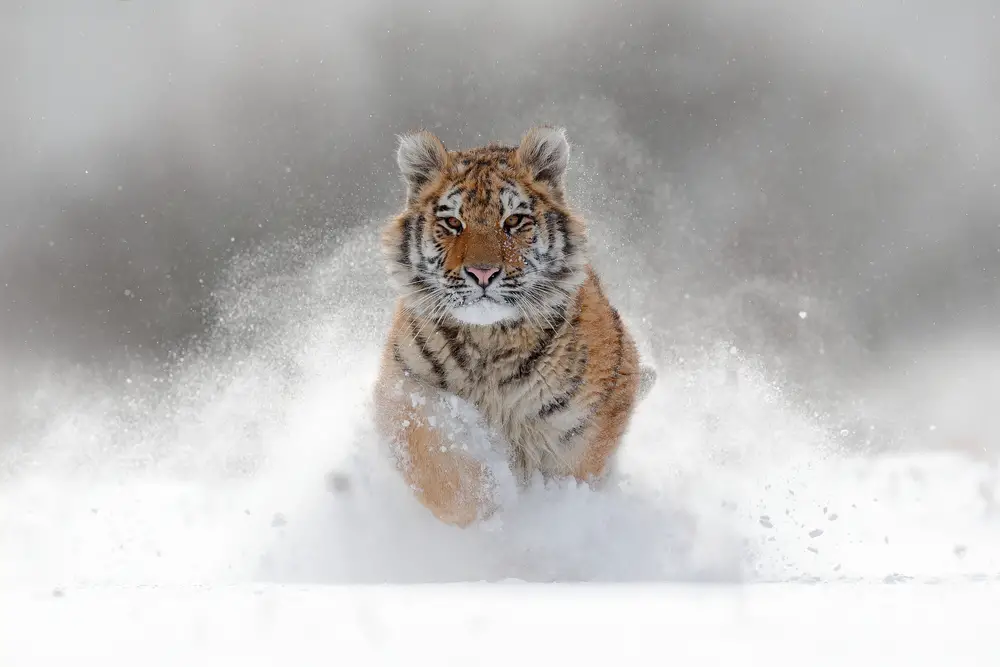
The Siberian Tiger, also known as the Amur Tiger, is the largest subspecies of tiger, adapted to cold environments in Eastern Russia. Their thick, dense fur provides excellent insulation against sub-zero temperatures, while the fat layer beneath the skin adds additional warmth. These tigers have broad paws, which distribute their weight on the snow, allowing them to move quietly and efficiently. Their muscular build and powerful limbs enable them to take down large prey, an essential skill in an environment where food is scarce. The Siberian Tiger’s striking appearance, with its pale coat and fewer stripes, serves as camouflage in snowy landscapes.
In addition to their physical attributes, Siberian Tigers have developed unique behavioral strategies to survive the cold. They are solitary animals with large territories, ensuring they have sufficient resources to sustain themselves. These territories are fiercely defended, and tigers utilize scent markings and vocalizations to communicate their presence. During harsh winters, they rely on their keen senses and stealth to hunt, often preying on deer and wild boar. The survival of the Siberian Tiger is a testament to the power of adaptation in overcoming environmental challenges.
13. Walrus
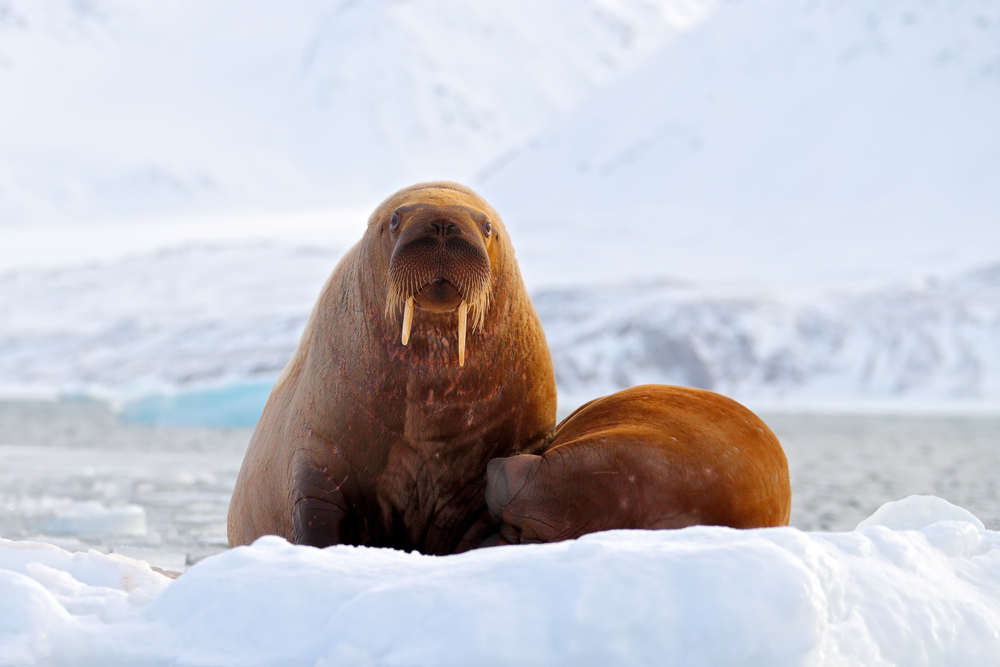
Walruses are iconic Arctic mammals known for their impressive tusks and adaptability to cold environments. Their thick blubber layer provides insulation and energy reserves, while their wrinkled skin is adapted to withstand icy waters. Walruses use their tusks for various purposes, including hauling themselves onto ice floes, fighting for dominance, and maintaining breathing holes in the ice. Their whiskers are highly sensitive and aid in detecting prey on the ocean floor. These social animals often gather in large groups, providing warmth and protection.
Their survival in extreme cold extends to their feeding and breeding habits. Walruses primarily feed on benthic invertebrates, such as clams and worms, which they locate using their whiskers. They are known for their deep diving abilities, reaching depths of up to 300 feet to forage for food. During the breeding season, males compete for females through vocal displays and physical contests. The walrus’s ability to thrive in icy environments showcases the importance of physical and social adaptations in overcoming challenges.
14. Arctic Hare
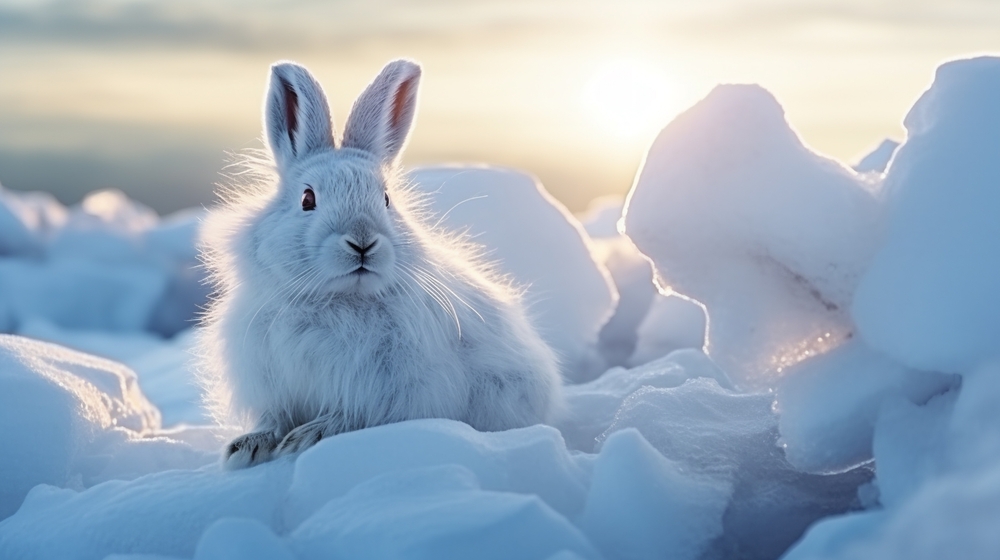
Arctic Hares are well-equipped for life in the cold, barren landscapes of the Arctic. Their thick, white fur provides camouflage against the snow and insulation against freezing temperatures. Unlike other hares, they have shorter ears and limbs, minimizing heat loss in extreme cold. Their large hind feet act like snowshoes, allowing them to move efficiently across snow-covered terrain. Arctic Hares are also known for their speed and agility, often reaching speeds of up to 40 miles per hour to escape predators.
In addition to their physical adaptations, Arctic Hares exhibit behaviors that aid in their survival. They are primarily herbivorous, feeding on woody plants, mosses, and lichens, which they find by digging through the snow. During the winter, they often form groups, providing warmth and protection against predators like foxes and owls. These social gatherings also facilitate breeding, ensuring the continuation of their species. The Arctic Hare’s ability to thrive in one of the harshest climates on Earth highlights the resilience and adaptability of life.
15. Narwhal
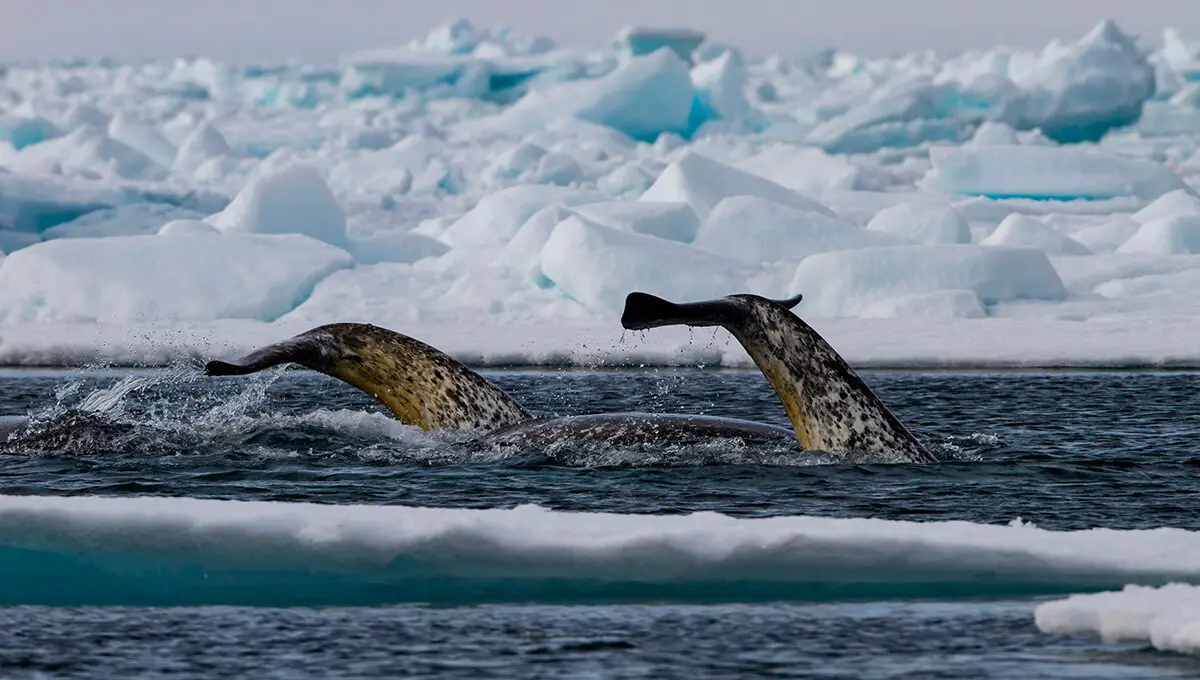
Narwhals, often called the unicorns of the sea, are unique Arctic whales known for their long, spiral tusks. They are well-adapted to cold environments, with a thick layer of blubber providing insulation against icy waters. Narwhals are deep divers, capable of reaching depths of over 5,000 feet in search of fish and squid. Their tusks, which can grow up to 10 feet long, are thought to play a role in mating displays and possibly sensory perception. Narwhals are also highly social animals, often traveling in pods that provide protection and cooperation in hunting.
Their survival in extreme cold is also linked to their unique migratory patterns. Narwhals spend winters in deep, ice-covered waters, relying on their ability to navigate through cracks and holes in the ice. In summer, they migrate to coastal areas, where the ice has melted, allowing them access to more abundant food sources. This seasonal migration is crucial for their survival, ensuring they have the resources needed to thrive in an extreme environment. The narwhal’s adaptations to cold and ice make it a fascinating subject of study in the resilience of Arctic life.
